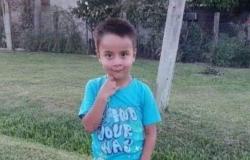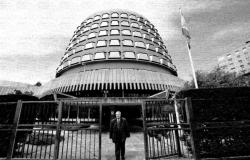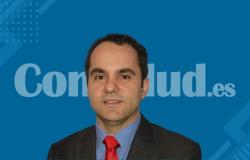
The authorities of Colombia and the United States They have identified 170 ‘invisible drug traffickers’, of which 17 have already been captured.
According to the criteria of
This group of drug traffickers are a priority for the two countries – partners in the fight against drug trafficking – first, because of the high levels of cocaine they carry, affecting the health of millions of people in the world; and second, because also The financial system is contaminated by money laundering.
On May 23, EL TIEMPO published the scope of a meeting – in Bogotá – between Anner Milgram, the director of the United States Drug Enforcement Administration (DEA) and the director of the National Police, general William Rene Salamancain which the topic of ‘invisible drug traffickers’ was covered.
From that meeting it emerged that the director of the DEA acknowledged in dialogue with General Salamanca that she was concerned about the increase in the use of bank accounts to launder money from drug trafficking – which would be directly related to the movements of the ‘invisible drug traffickers’.and that, therefore, it is essential to strengthen international cooperation against cryptocurrencies.
Anner Milgram, director of the DEA
Photo:National Police
‘Invisible drug trafficker’ fell in Cundinamarca
On May 7 of this year, General Salamanca reported on the capture of Juan Antonio Gil Díaz, a man who posed as a businessman dedicated to agricultural work on his farm located in Paratebueno, Cundinamarca.
The investigation was born from the exchange of information with Venezuelan authorities, who placed Gil as a member of the criminal network.Aragua Train‘, which he supplied with weapons and explosives.
Parallel to this, French authorities alerted the Colombian Police about the presence of Gil – who had been investigated in Paris since March 2023 – as the head of the shipment of a shipment of eight tons of cocaine seized in French Guiana.
Alias Toño’s farm was in Paratebueno, Cundinamarca.
Photo:Police
I lived in luxury
Gil was captured on his farm, where he was building his own version of Pablo Escobar’s legendary Hacienda Nápoles, with swimming pools, recreation areas, jacuzzis, nightclubs, among other luxuries.
In fact, when They captured him, he had a chain around his neck whose value amounts to 70 million pesos..
Likewise, the house had a cellar with imported liquors and a closet with designer clothes.
This capture was reminiscent of Juan José Valencia Zuluaga, alias Falcón, considered an ‘invisible drug trafficker’‘ and captured by the Police in Medellín in May 2021, reported launder money for the then head of the ‘Gulf clan’, Dairo Antonio Úsuga, alias Otoniel.
Ferrari alias Falcon.
Photo:Private file
Profile of ‘invisible drug traffickers’
EL TIEMPO learned that the United States and Colombia launched the alert about the so-called ‘invisible drug traffickers’, recognizing that this figure has managed to gain a foothold among “the bosses, the heads behind the investments and international connections, to introduce the money resulting from cocaine trafficking into the legal financial market“.
According to the Police there are two types of ‘invisible drug traffickers’, those who have a higher education level, university, who come from strata 3 and 4, and who end up involved in drug trafficking “through third parties.” These keep a low profile.
The other group is concentrated at the bases of the organizations, for example, the cocaine transporter who becomes independent and contacts the bosses of foreign cartels and begins trafficking.. These are the ones that stand out for their eccentricities.
Seizure of pure cocaine
Photo:National Police
Low-profile ‘invisible narcos’
These people manage to climb through the power of money in the major spheres of the country, where they pose as prosperous businessmen, in fact, they offer free investment loans to their peers with low interests, “which makes it easier for them to be accepted into the union, because they gain the trust of real businessmen“, indicates the Police.
They are investors in construction, agricultural, and business projects, which allows them to launder money in these facades. and thus be able to stay below the radar of the authorities. Along these lines, they have contacts throughout the production chain and that is why they end up being valuable to the criminal networks and They are wanted by armed groups to boost their profits.
They like to live in condominiums or country estates, surrounded by luxury, and visit fine restaurants, as well as wear designer clothes, shoes and watches.
Likewise, authorities say that they They never use cell phones to talk about their illicit activities; they do this through emissaries or in personal meetings.
In addition, they are in charge of laundering the money – dollars and euros – of the heads of other networks such as the ‘Gulf clan’.
The drugs were destined for Spain
Photo:Anti-narcotics Police
Eccentric ‘invisible narcos’
This group of cocaine traffickers are the easiest to identify, the Police said, because they exaggerate the use of jewelry, expenses and even bodyguards.
It is also noted that the ‘invisible drug traffickers’ resolve internal disputes over drug trafficking without the need to make their retaliation public, and to do so they use the so-called ‘collection offices’, which makes it easier for authorities to locate another line of investigation.
Finally, these ‘invisible drug traffickers’ go to the areas to negotiate cocaine shipments, which also exposes them to the authorities.
ALICIA LILIANA MÉNDEZ
Justice Editorial
In X: @JusticiaET





